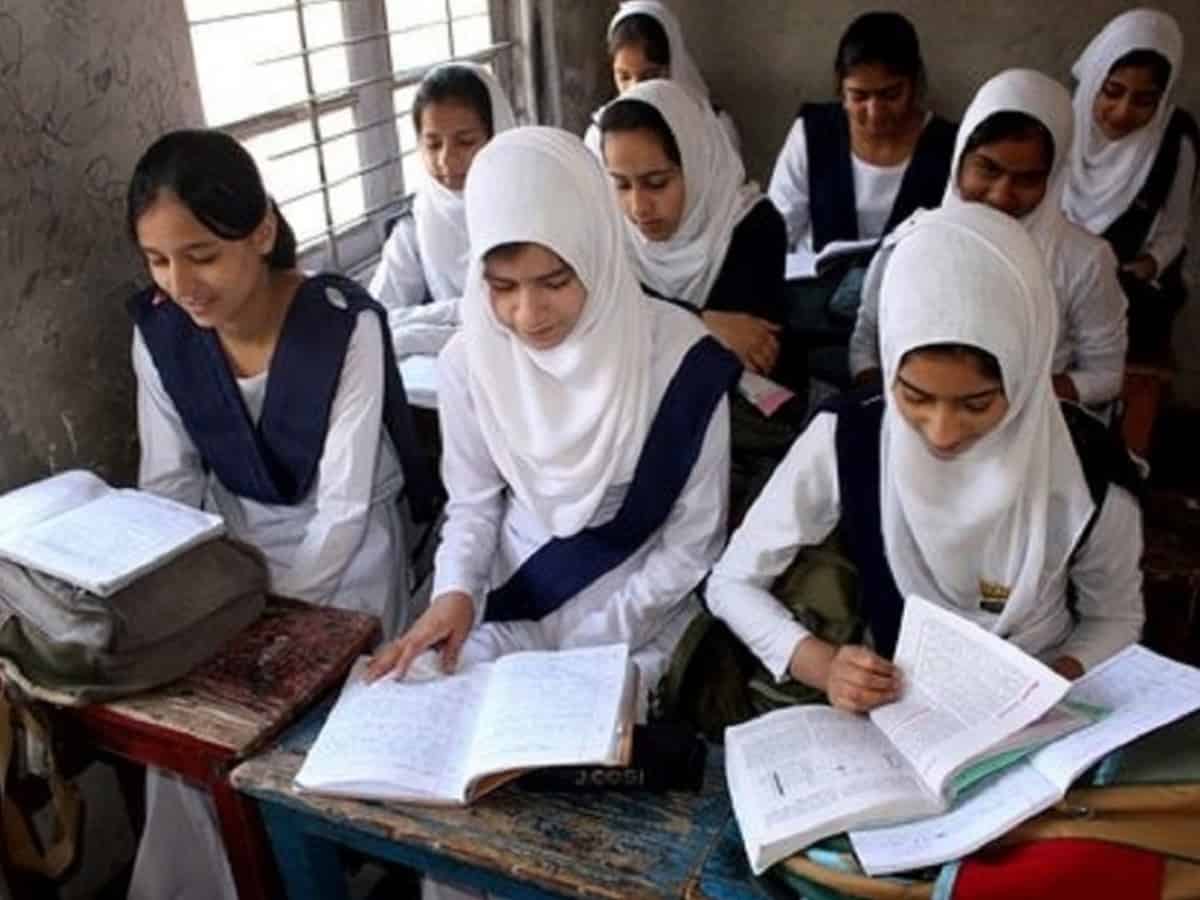Hyderabad: The state of education of Muslim students in Telangana seems to be looking up as the percentage of enrollment of students just before the pandemic is above the national percentage of this community.
This inference is drawn from the Unified District Information System for Education Plus (UDISE +) report. The report presents a picture of the state of school education in the country by giving data on the number of enrollments, number of schools and what type of management is running them, facilities and infrastructure available in these educational institutions for the year 2019-2020.
The UDISE + report shows that percentage for Muslim minority enrollment to total enrollment across the country is 13.95%. As compared to this, the community in state of Telangana has done better. This is on account of the percentage of enrollment for that community is 15.34%.
There are interesting patterns and trends which the report leaves for its reader to decipher. For example, the percentage of enrollment of girls has been consistently higher than that of boys from primary level of education, meaning from class I to class V, Upper Primary education, meaning class VI to class VIII, and Secondary Education, meaning from class IX to class X. However, there is a reversal of sorts of this trend in higher secondary, meaning class XI to class XII. In this case, the percentage enrollment of boys is ever so slightly higher.
Here are the figures: While the total percentage of enrollment for the Muslim community in primary education was 16.28%, that of boys was 16.13%, and keeping in with the aforementioned trend, that of girls was 16.45%. The total percentage of enrollment for the upper primary level of education was 15.87%, that of boys was 15.45% and of girls was 16.31%. The enrollment in secondary education was 14.96%, the percentage for boys was 14.48% and girls was 15.46%. In the higher secondary level of education, the enrollment for boys was 10.79% and for girls was 10.69%.
Interestingly, research shows that literacy level of Scheduled Castes and Scheduled Tribes in Telangana is lower than that of the Muslims. A research paper in the book Muslims in Telangana illustrates this point. The paper also explains the attendance of students in educational institutions, even as it underscores the urban-rural divide.
“In the rural areas, the percentage of persons attending educational institutions declined among the STs and Muslim General in 2011–12. This happened for both males and females among the former category, but only for males among the latter. In urban areas, the percentage of persons attending educational institutions declined among the SCs, STs, and Muslim OBCs, and other minorities. This decline was higher in urban areas than in the rural areas among SCs and STs for both males and females. Overall, the performance of Muslim OBCs and Muslim general was better than that of the SCs, STs, and Hindu OBCs. However, in the urban areas the performance of Muslim OBCs was lower than that of Hindu OBCs,” the research paper authored by P Aparna, a faculty of the Centre for Economic and Social Study states.

